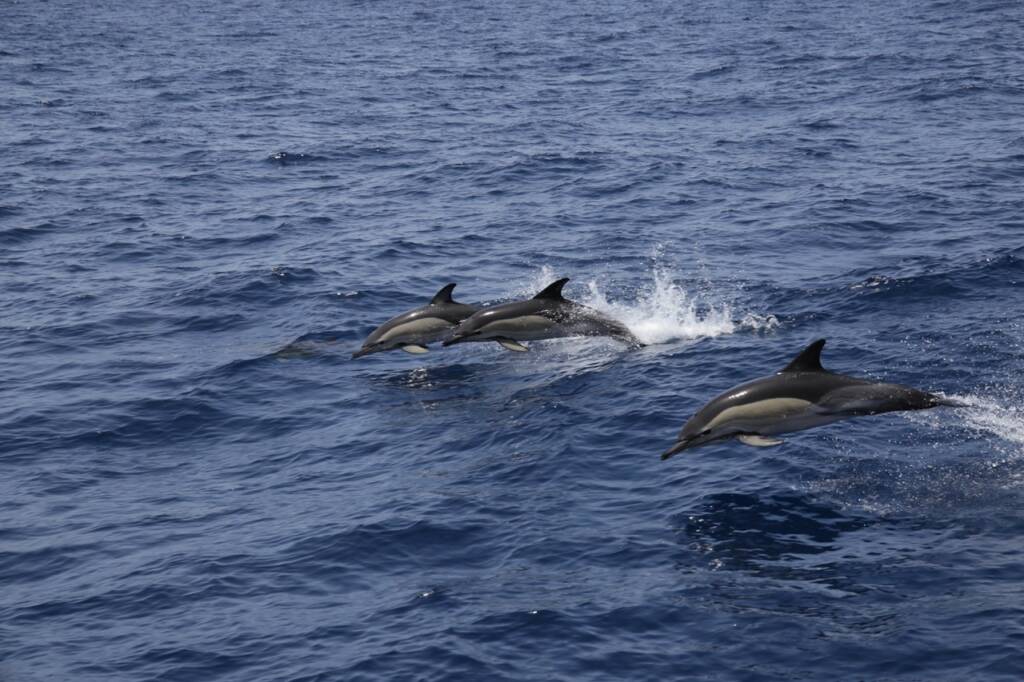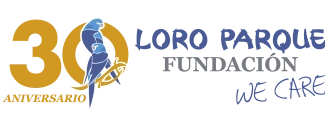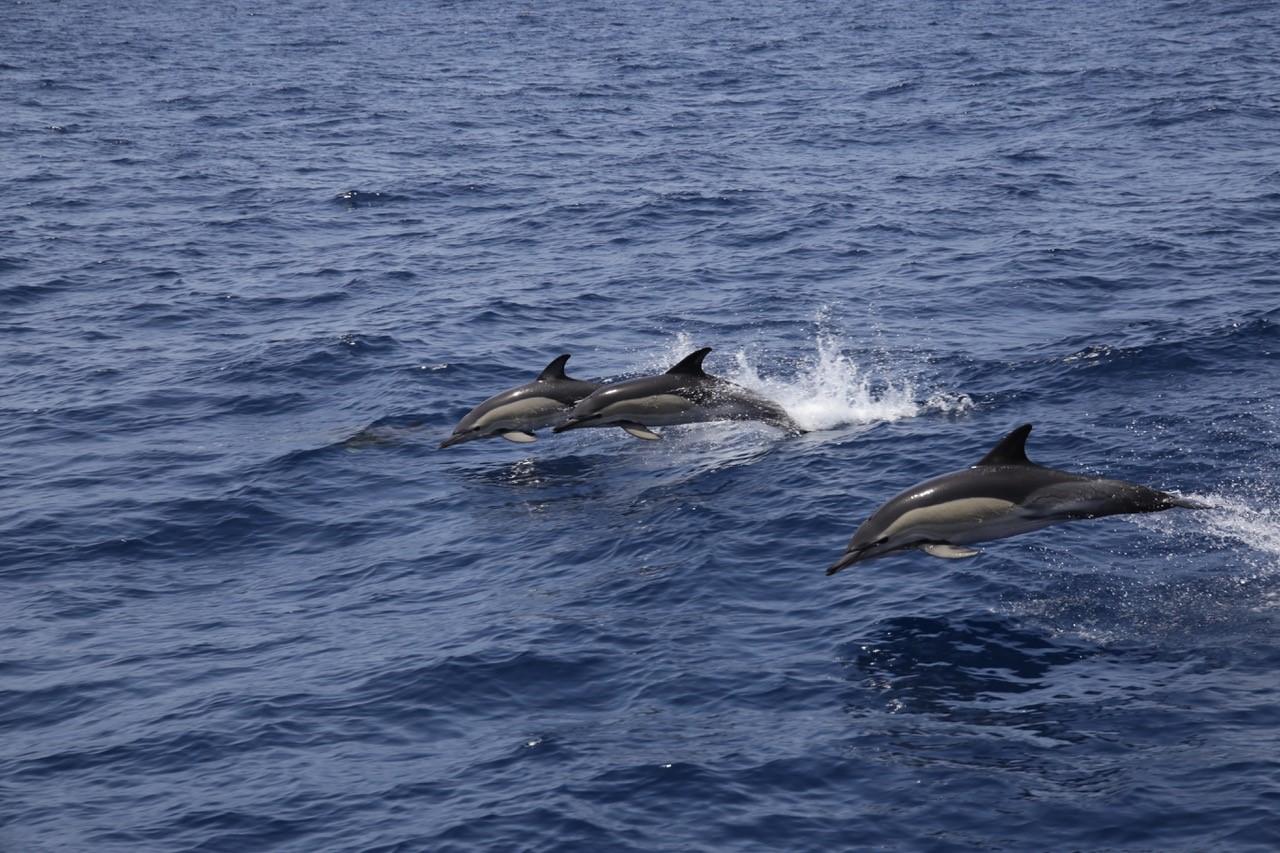
The Canary Islands are a black spot for whales and dolphins. Sperm whales, fin whales, pilot whales, common dolphins, striped and spotted dolphins, … species that are naturally stranded on the coast or that collide with boats, come into contact with fisheries and eat plastic. This year, despite the measures taken by the COVID 19 pandemic, animals continue to reach the coasts. On 6 April a fin whale in Corralejo (Fuerteventura), on 12 April a sperm whale in Cofete (Fuerteventura), on 2 May a risso’s dolphin in the north of Majorero, on 25 May a sperm whale in Agüimes (Gran Canaria), on 6 October a sperm whale in Mogán (Gran Canaria) … These are all examples of a problem that requires action.
Antonio Fernández Rodríguez, director of the University Institute of Animal Health and Food Safety (IUSA) of the University of Las Palmas de Gran Canaria, explains that they are working along these lines by introducing technology in shipping companies to avoid collisions, in reducing the plastic that reaches the sea and in educating fishermen. These tasks, however, are not the only ones that IUSA is carrying out.
The Institute is composed of five divisions, including Histology and Animal Pathology. The researchers in this section “are fundamentally veterinarians and specialists in Pathology” who “are responsible for determining the cause of death of cetaceans stranded in the Canary Islands”. Once they find a stranded animal, the director points out, “either they transport it to that island or, if it is in Gran Canaria, the dolphin, for example, is brought to the Faculty of Veterinary Medicine” which has an autopsy room where it is dissected with the aim of finding lesions that indicate what caused its death.
And exactly how many cetaceans beach in the Canary Islands each year? Antonio Fernández indicates between 50 and 60, the majority of which are dolphins and also whales. “The most frequent causes are related to natural causes”. Infections, parasitic, viral or bacterial diseases, cancer… Causes that are added to the advanced age of many of the animals and the calves that are the result of an abortion. Human activity is the second cause of stranding and the most frequent is the collision with fast boats. Whales and sperm whales are the two subspecies that the director points out, because the continuity of their species can be undermined, especially for that last mentioned. “If one dies from a collision, whether it is male or female, you have a problem because they need many years to grow and if they die the population can be significantly reduced”. Human action also includes interaction with fishing, “but in the Canary Islands, on the other hand, the number of dolphins killed by interaction with fishing is fairly low. And the reason is that there is no industrial fishing, no fishing by large boats, and only little traditional or local fishing”. Plastic also kills. Pollution by this element causes the death of 2% of cetaceans. “They mistake it for food, they swallow the plastic and that plastic ends up causing an obstruction in their stomach or intestine”. The sentence is clear. “Of every three cetaceans stranded in the Canary Islands, two die of natural causes and one of causes derived from human activity”, said Mr Fernández.
The latest statistics on stranding of cetaceans in the Canary Islands by the autonomous government extend these data. Between 2000 and 2018, the species most affected were the striped and spotted dolphin, with an average of more than seven cases each year, the sperm whale and short-finned pilot whale with more than four, the bottlenose dolphin, the beaked whale and common dolphin with more than three, and the pygmy sperm whale with an average of three. The same report shows a steady increase in stranding, from 27 in 2000 to 68 in 2018.
With some 30 different species like these, the waters of the Canary Islands are full of cetaceans. This figure, says the director, indicates that the proportion of those that strand is not high. There is an alarm because all the animals that come to the coast are detected by the Cetacean Stranding Network. Coordinated since 1997 by the Canary Islands Government, the Network focuses on studying the biological information that stranding provide and on analysing the state of conversation of the populations. Records such as this, points out Antonio Fernández, do not report many mass stranding. “Because, at the end of the day, the animals that appear on beaches are only a very low percentage of those that die”.
For the cetaceans that strand, there is a Rescue Unit that helps them and tries to “introduce them back to the open sea in an attempt to get them to return to their group or family”. Unfortunately, one or two stranded cetaceans every year cannot return to the sea “and they can rarely recover”. In the cases in which they can recover, the animals are taken “to a pool that is well prepared for a recovery issue or to a park” where they remain between 24 and 72 hours for a medical evaluation. “The usual procedure is to try to evaluate what the problem is and to treat it, and in many cases, to take the animal back to the sea to release it, but if the problem is serious, it is euthanized”.
So, what happens to the cetaceans that do not reach the coast? It is said that they can represent between 93 and 95% of the dead animals. The causes of their deaths are the same as those of those that strand on the Canary Islands’ coasts: natural causes and causes derived from human action. As the open sea is the setting, natural causes include another factor. The interactions between species. Antonio Fernández points out that, apart from the food that dolphins provide for sharks and killer whales, cetaceans “sometimes compete for the same territory in which they find food. Or they hit each other”.
Stranding, although an unfortunate circumstance, helps to study the state of the marine ecosystem in the archipelago. “I believe that in our ecosystem cetaceans are bio-indicators” and so “if an animal is stranded and has died from plastic, what does that mean? Well, that we have a problem with plastic contamination. If an animal appears with other contaminants, for example, chemical contaminants, we have to take into account this kind of problem,” argues the director.
The solutions to stranding are diverse. From working “so that ship companies can introduce technology that avoids collisions” and “can manoeuvre before they collide”, to reducing the plastic that reaches the sea and to the educational processes with fishermen. “They are gradually interacting less with the dolphins in the sense that they are not harming the animals”. All are IUSA projects that help to mitigate the effect of various causes on cetaceans, but whose problem “is not going to be solved overnight”. For this reason, the director of the Institute urges that administrations “continue to maintain the levels of what we call health surveillance. Always monitor what is causing the death of cetaceans”. There are three key principles here. “Diagnose the cause, treat the problem and prevent the problem”.
A lifesaver for a “rather chaotic” situation
Loro Parque Fundación has also been involved in the search for solutions. Together with the IUSA, the foundation directed by Javier Almunia is working on the development of a pontoon, “a floating system that looks very much like a inflatable boat”. With two side balloons and a central tarp, “the system is designed to help in the refloating of cetaceans, to bring them back into the water and to be able to put them in deep water so that they can swim out”.
This initiative is part of the MARCET II project, which focuses on “technology transfer from the academia of universities to society in order to improve the sustainability of marine resources” and especially “on the subject of cetaceans in Macaronesia”, says the director, and was born after the massive stranding in Cape Verde over the last two years. “There we saw the need to have tools and trained personnel to be able to help the animals in a stranding because the situation was really quite chaotic”.
The pontoon is trying to adapt to the circumstances of Macaronesia and is currently in version zero of the prototype, which will be improved with field tests. The Cofete beach, in Fuerteventura, was the scene of a simulation in August “which gave us enough clues about how to improve the systems for holding the tarp, which had some problems, systems for holding the buoys, etc.”, Javier Almunia stressed. These results will be incorporated into the second development. They are also working on a smaller version of the pontoon because the prototype “is for large animals, such as pilot whales, animals that may be four or five metres long and which are heavy”. This one is four metres long and is too big “for small animals such as bottlenose dolphins, animals that can be around two metres long”.
The pontoon station is located on Tenerife, but is available to the whole of Macaronesia and even other regions of Spain. This is the case of Asturias, where it was moved by plane “because they had a pilot whale stranding” at the end of September. Almunia acknowledges that “they have tested it and are taking it as a precaution for a while until they see if there is definitely a risk of stranding” for three animals on the coast of Carreño.
“We hope it can be very useful, especially more so than on the islands in Macaronesia”. Cape Verde and other archipelagos, according to the director, suffer more mass stranding than the Canary Islands, where isolated or sick individuals generally strand.
“The duty to protect them is key and essential”
“We are mainly concerned about the 81 records from 2000 to 2018”. This is the view of Miguel Ángel Pérez, vice councillor for the Fight against Climate Change, regarding the cetaceans that, out of some 938 between these dates, have stranded due to collisions with boats. Armas and Fred Olsen are the two main companies operating on the islands and with whom “the Government has had meetings” regarding this topic. Apart from studying other lines and a possible reduction in the speed of the ships, “Fred Olsen has incorporated a new early warning system to detect cetaceans on the routes where there is the greatest concentration. Mainly in the eastern part of the Canary Islands and the traffic between La Gomera and Tenerife”, he said.
The application of these measures does not mean that the animals that reach the coast are the only ones that die. The vice counsellor points out that “the detection of cetacean stranding not only involves the cetacean that is stranded on land, but also the detection of dead animals that are inaccessible because the tide carries them back to the sea”. These animals are identified and an attempt is made to investigate the reason for their death, which is sometimes complicated because the body is not accessible. Even so, “we also use it as an element of quantification of the number of marine mammals that have died over the last 20 years”.
81 out of 938. This is the number of cetaceans stranded between 2000 and 2018 due to collisions. Although they only represent 8.63%, Pérez argues that “they are animals of which many are in danger of extinction and, therefore, the duty to protect them is key and essential”. The Autonomous Government’s Ministry of Ecological Change, Climate Change Mitigation and Spatial Planning has already asked the central government to revive the plan to create a conservation area in Teno-Rasca. As the vice minister acknowledged, planning for a special protected area has been at a standstill for several years since September 2011, and the attempt to resume it “would bring progress, particularly in terms of regulating the routes and transport lines between the islands. This project reflects the work of this administration, which is responsible for “nature conservation and the important marine mammal sanctuary that we have here”.


